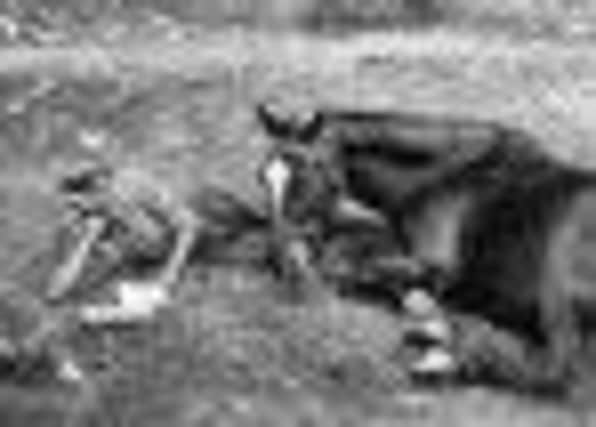Two warriors who fought side by side


On the centenery of the Great War, Pinxton First World War Committee chairman Stan Berrill has researched into the story of Jack Seely and his faithful steed Warrior.
Stan said: “Many people will have seen the film War Horse, based on Michael Morpurgo’s famous children’s book but how many know that there was a real war horse called Warrior and that it was ridden by one of Pinxton`s most illustrious sons?”
Advertisement
Hide AdAdvertisement
Hide AdJohn Edward Bernard Seely, 1st Baron of Mottistone was born on May 31st 1868 at Brookhill Hall, Pinxton.
John, better known as Jack, was educated at Harrow and Trinity College Cambridge, where he met Winston Churchill who became a lifelong friend.
He fought in the Boer war and was mentioned in despatches.
By 1900 he was a Colonel and elected to parliament for the Isle of Wight, before becoming an MP for Ilkeston, Derbyshire between 1910 and 1922 .
In 1912 he was appointed Secretary of State for War and was involved in the development of the Fly Corps.
Advertisement
Hide AdAdvertisement
Hide AdHe left England and became a Major General in the Canadian Cavalry, which is how he entered the First World War.
Seely served with distinction, won several medals and was mentioned in despatches five times.
His foal, Warrior was born in 1908 on the Isle of Wight. Warrior was to become a real war horse and stayed with him for the next 33 years.
They walked off the boat together at Le Havre on August 11th 1914 to join the infamous Western Front.
Advertisement
Hide AdAdvertisement
Hide AdHe was at the retreat from Mons, saw service on the Somme, Cambrai and was dug out of the mud at Passchendaele and Ypres.
Jack, now known as ‘galloping Jack Seely’ led the last cavalry charge in British history in 1918 against the German spring offensive, on March 21st.
Ten miles south-west of Amiens at Moreuil Wood the Germans had to be stopped at all costs.
The wood was taken and the German advance stopped but a quarter of the men and more than half the 1,000 horses of the Canadian cavalry were lost. Had the Germans broken through the outcome of the war may have been different.
Advertisement
Hide AdAdvertisement
Hide AdFollowing this, Seely and Warrior were to report six miles north to Gentelles to plan an attack the next morning but on the way Warrior became lame and was out action.
This saved him yet again as the horse Seely rode the next day was killed and Seely was wounded and gassed .
It was Warrior’s last escape.
In December 1918 Warrior and Seely were back on the Isle of Wight and in 1922 they were both at a victory parade in Hyde Park.
They had many happy years together hunting and riding point-point. On 30th March 1941 after two very bad winters had taken their toll on Warrior`s health and Britain was at war again,
Advertisement
Hide AdAdvertisement
Hide AdOn the 30th March Warrior died and an obituary in the Evening Standard and the Times read: “The Horse the Germans could not kill.”
General Jack Seely died on November 7th 1947 in the city of Westminster. His grandmother is buried in Pinxton church yard on the east side of the church in front of the Brookhill Aisle.
Stan thanks Ray and Margaret Harrison of Brookhill Lodge, for helping him reveal the story.
captions : Major General John “Jack” Seely.
Jack Seely pictured with his friend Winston Churchill.
Jack Seely with his faithful horse Warrior.